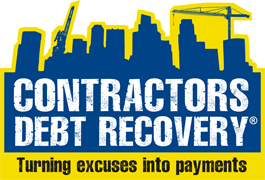How to Deal With Part Payments
Video Transcript
Hi, there. Anthony from Contractors Debt Recovery with yet another instalment of amazing information. I hope you think. I think so anyway but I’m bias. Let’s talk today about part payments. Now this arises when you’re doing multiple jobs and you’re invoicing against each of those multiple jobs to the same customer. So job 1, job 2, job 3 and 4. Now you’re invoicing, you’re generating a separate invoice to your customer for each job you’re doing. Each job has reconciliation. Each job will have a credit. Each job has its own nuances. So it’s as you know a hell of a job keeping on top of accounting for each of these jobs. Now what makes things worst is what you let your customers do.
So let’s assume so far what you’re owed for each job is let’s say $12,000 there, $27,000 there, $16,000, $11,000 for argument sake. It can be anything. Well now you’re generating invoices here and your customer who treats you as a single account, incorrectly as a single account doesn’t care what job, this job, that job and they go, “Oh what the hell, here’s $50,000.” Let’s call it $20,000. It makes it easier. So now you got a payment for $20,000. Just turns out in your account. Which job is that for? No idea. Which invoice is that payment for? No idea. How who you book it against your job? No idea. And this is a big problem. I don’t know. It’s great to get $20,000. I’m not arguing with you with that but you need to account for it.
So you either need to insist that your customer, just right over the top, stick to invoice amount. If they make a payment, pay the invoice amount. Get them on the horn. Invoice amount only. I’ll take the $20,000 but we need to be, which invoice does it goes to. Now if they say I don’t care or you can’t have that conversation. You allot it and allot it to the oldest invoice first across any of those jobs. If this job is six months old all this invoice is six months and the others are three months or two months old, clear that off that deck first. Then send your customer a written report going of your $20,000 I received today that amount was applied to these invoices. That invoice for this job. That invoice for this job. So this is now what’s left owing.
So that there is a paper record of where that $20,000 went. Because if you have a payment dispute over job 2 your client will say, “Hang on. I paid you $20,000 for job 2. You’re only owed $7,000 there.” Then you’ll have a dispute over job 3 to which your client will say, “Hang on. I’m owed $16,000. I’d paid you $20,000. I overpaid you by four. Give me four back.” So they’re running the same amount against each job as you have a dispute. So what you need to do is anchor where that $20,000 leads. This is where we put the $20,000 so that your client can’t be quadruple dipping. If you know what I mean…So on the website there’s an article called the trouble with part payments and this is what I’m talking about. So keep on top of it. Either keep your client paying only invoice account and reconciling against invoices.
If you just get this odd number turning up, you’re allowed to invoice this and you send a written report to your client going thanks for the payment of $20,000. This is how I’ve applied it to the amounts you currently owed me and here are the invoice numbers and this is what left owing. And that will give you far more control over this kind of shenanigans that clients tend to impose against contractors. If you got any issues, any questions give us a call. Our number should be on your screen. Other than that, I’ll see you next time.
